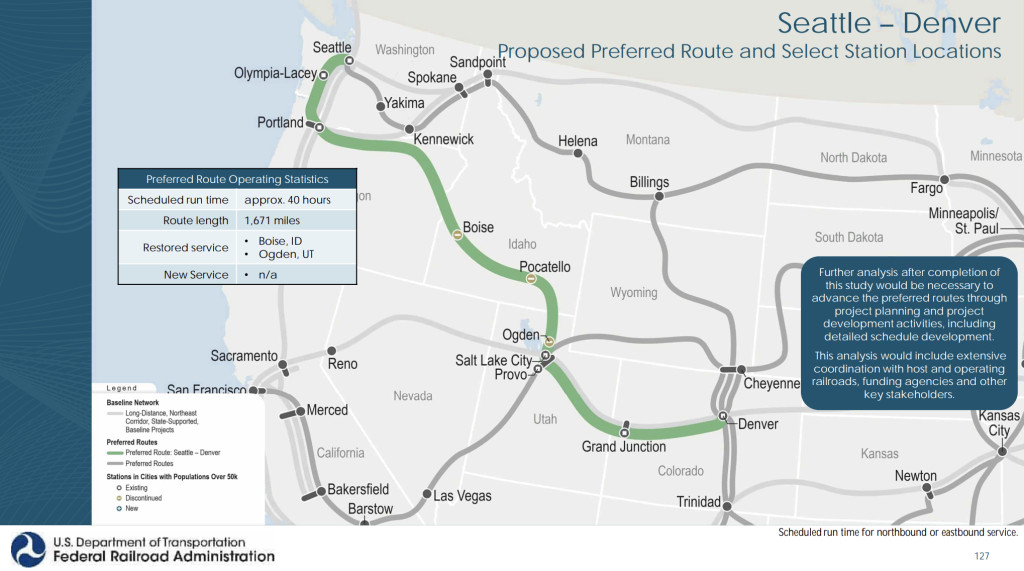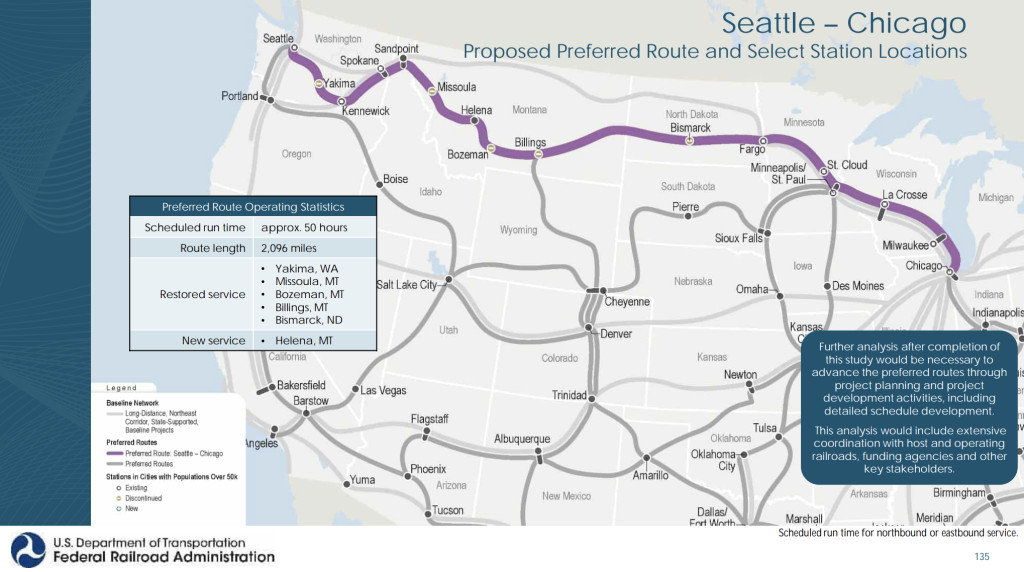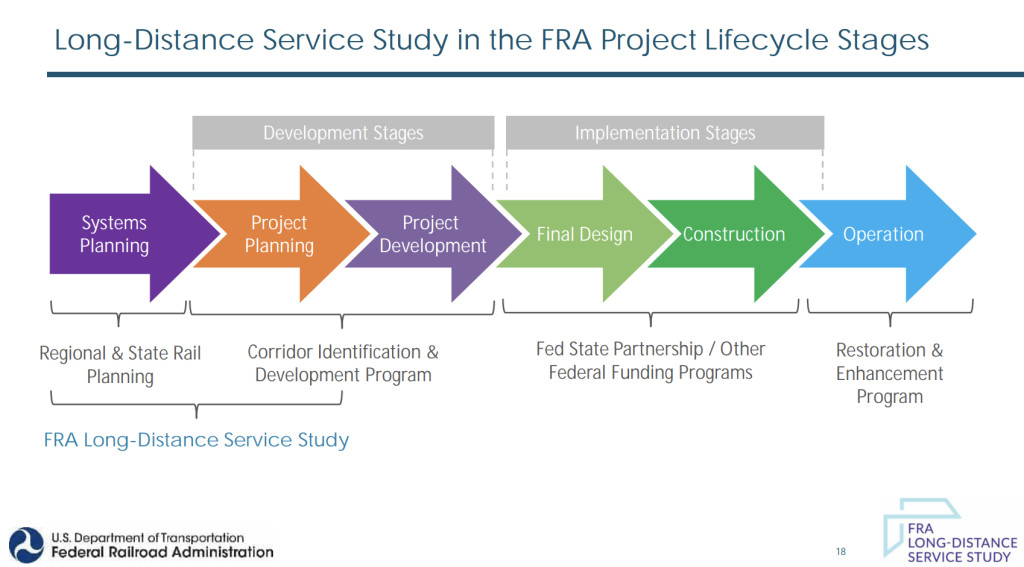The Federal Railroad Administration (FRA) is proposing a significant expansion of Amtrak’s long-distance services, potentially doubling the current network. Among the exciting prospects is the revival of routes in the Pacific Northwest, including a service reminiscent of the beloved Amtrak Pioneer. This expansion, fueled by President Biden’s infrastructure bill, aims to connect underserved communities and modernize the nation’s passenger rail system.
Biden’s Infrastructure Bill Sparks Amtrak Expansion Plans
President Biden’s landmark infrastructure bill, officially the Infrastructure Investment and Jobs Act of 2021, has directed the FRA to explore a substantial expansion of daily intercity passenger rail service. This initiative focuses on reinstating previously discontinued Amtrak long-distance routes and enhancing the frequency of existing routes that operate less than daily. The FRA study is specifically looking at routes that were active in April 1971, just before Amtrak took over national intercity passenger rail service.
This ambitious study has resulted in a preferred plan that could add 15 new Amtrak long-distance routes to the national map. This expansion promises to create a more comprehensive and accessible passenger rail network, with new hubs emerging in cities like Denver, Cheyenne, Albuquerque, and Salt Lake City.

Current Amtrak Routes: Amtrak operates 15 long-distance routes across the United States. A federal study suggests this number could potentially double, expanding train travel options significantly.
The FRA’s analysis highlights the extensive benefits of this proposed expansion:
- Improved access to healthcare with 82 additional medical centers reachable by train.
- Enhanced educational opportunities with 600 more higher education institutions accessible.
- Greater access to nature and recreation with 12 more national park and recreation areas served.
- Significantly better connectivity for smaller communities, serving 102 more stations in these areas, totaling 212.
- Expanded service in larger cities, adding 114 stations for a total of 329.
- Access to train service for an additional 45 million Americans, bringing the total to 292 million, with a significant impact on rural areas.
- A dramatic increase in route mileage, more than doubling from 21,900 to 45,100 miles.
Pacific Northwest Rail Renaissance: The Return of the Pioneer?
For the Pacific Northwest, the FRA’s plan proposes two exciting new routes, both revivals of past services. One of these routes is particularly noteworthy for those familiar with Amtrak history: a Seattle-Denver service that strongly echoes the Amtrak Pioneer.
The Seattle-Denver route would largely reinstate the Amtrak Pioneer service, which operated from 1977 to 1997. This proposed 1,671-mile corridor would feature daily service and key stops in major cities including Portland, Boise, Pocatello, Ogden, Salt Lake City, and Grand Junction. The estimated travel time is around 40 hours from end to end. Crucially, this route would serve five metropolitan statistical areas with a combined population of approximately 1.28 million residents that currently have no Amtrak service.

Proposed Seattle-Denver Amtrak Route Stations: This map details the potential stations along the revived Seattle-Denver route, reminiscent of the Amtrak Pioneer, bringing train service to numerous communities.
The second proposed Pacific Northwest route is the restoration of the Amtrak North Coast Hiawatha service between Seattle and Chicago. This 2,096-mile corridor revives a route Amtrak briefly operated from 1971 to 1979. The North Coast Hiawatha proposal has already gained momentum, with the Big Sky Passenger Rail Authority securing federal funding to study its restoration last year.
While sharing some segments with the existing Empire Builder route, the revived North Coast Hiawatha would offer unique service through parts of Washington, Montana, and North Dakota. Notably, it would serve Montana’s largest population centers. Within the Pacific Northwest, the route would reactivate stations in Yakima and Missoula and enhance service to existing stations in Kennewick, Spokane, and Sandpoint. It would also establish a new direct rail connection between Seattle and the Tri-Cities area.

Seattle-Chicago Amtrak Route and Travel Time: A map outlining the proposed Seattle-Chicago North Coast Hiawatha route, including estimated travel times, which aims to reconnect communities and offer an alternative to the Empire Builder.
End-to-end travel time on the North Coast Hiawatha is estimated at 50 hours, and it would serve three metropolitan statistical areas (with around 400,000 residents) that currently lack Amtrak service. The route also aligns with previous studies, such as the Stampede Pass study, which explored east-west rail service in Washington, suggesting potential for significant ridership in the region.
Building a National Rail Network for the Future
The FRA’s current study is a crucial step towards realizing a more extensive Amtrak long-distance network. This work will guide proposed routes through the necessary planning stages, making them eligible for federal funding. This funding will be vital for infrastructure improvements, station construction and reactivation, and acquiring the resources needed to operate these long-distance services.

FRA Amtrak Long-Distance Project Cycle: This diagram illustrates the lengthy process involved in developing federal passenger rail projects, highlighting the current study as a significant step forward for long-distance route expansion.
The FRA study is expected to continue throughout this year and into the next, with key details regarding implementation schedules, costs, benefits, and recommended actions anticipated this spring. The potential revival of services like the Amtrak Pioneer and the North Coast Hiawatha signals a promising future for passenger rail in the US, offering enhanced connectivity and travel options for millions of Americans.

